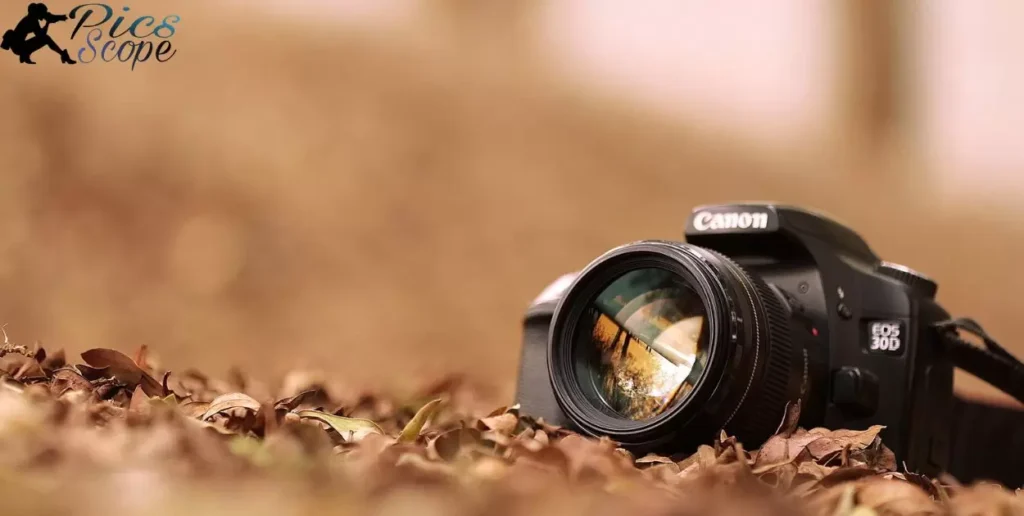Digital photography refers to taking pictures using a digital camera or smartphone that captures images electronically instead of on film. Digital cameras have an image sensor and storage device inside instead of rolls of film. Pictures taken with a digital camera can be instantly viewed, edited, printed and shared.
Which of the following is not true about digital photography” is an interesting phrase that makes you wonder what could possibly be false regarding this modern way of taking photos. It grabs your attention right away and makes you want to find out what the exception is when it comes to facts about digital photography.
There are many advantages to digital photography that are true – images can be deleted and retaken if unsatisfactory, memory cards provide ample storage space for thousands of high resolution photos, images can be edited with software and filters and instantly shared online.
Is Digital Photography Really Instantaneous?
Digital photography is very fast, but not truly instantaneous. When you press the shutter button on a digital camera, there is a slight delay before the photo is actually captured, known as shutter lag.
This is the time it takes for the camera’s autofocus and autoexposure systems to do their work, as well as the time required for the shutter mechanism itself to open and close. While shutter lag used to be quite noticeable on early digital cameras, averaging around 0.5 seconds, modern DSLRs and mirrorless cameras have very short lag times of 0.05 seconds or less.
What speed capabilities set digital photography apart?
Digital photography offers unprecedented speed capabilities compared to film. Without the need to manually advance film between shots, digital cameras can capture photos in quick bursts. Top professional DSLRs can shoot over 10 frames per second, while mirrorless cameras can exceed 20 fps. This allows capturing fast action like sports in ways not possible with film.
Digital cameras also provide very short shutter lag times under 0.05 seconds, which is essentially instantaneous compared to the mechanical delays inherent in film cameras. This means shots can be captured the instant the button is pressed for candid moments
Do digital cameras have any lag time?
Yes, digital cameras do have a small amount of lag time between when the shutter button is pressed and when the image is captured, known as shutter lag. This brief delay is due to the time required for autofocus, autoexposure, and the shutter mechanism itself, and averages around 0.05 seconds for most modern cameras.
While not instantaneous, this amount of lag is short enough to capture most action and candid shots effectively. The fastest DSLR and mirrorless cameras aimed at sports and action photography can achieve shutter lag of just 0.03 seconds. So while not absent entirely, shutter lag is generally not a limiting factor with digital photography.
Can digital images be viewed immediately?
Yes, a key advantage of digital photography is the ability to instantly review photos immediately after capture. Unlike film cameras which required film processing, digital cameras can display photos on the LCD screen right after they are taken. This allows photographers to quickly check the framing, exposure, focus and other aspects of the images.
Being able to instantly review and evaluate photos allows photographers to learn and improve much faster. It also enables deleting unwanted shots immediately instead of after processing an entire roll or more of film. Digital photography’s instant image review, along with rapid shooting speeds, are some of the main advantages that have made it the dominant form of photography today.
Does Digital Photography Produce High Resolution Photos?

Digital cameras can produce very high resolution photos. Resolution refers to the amount of detail a photo captures. Digital cameras measure resolution in megapixels, with more megapixels equating to higher resolution and more detail. Most digital cameras today have sensors with resolutions of 12 to 50 megapixels.
How do megapixels affect photo resolution?
Megapixels directly relate to resolution. One megapixel equals one million pixels. More megapixels means the camera sensor has a higher resolution and can capture finer details. A 50MP camera can capture finer details than a 12MP camera. More megapixels also allows enlarging photos more without losing quality.
Can digital photos be enlarged significantly?
Yes, digital photos can be enlarged significantly while retaining quality. High megapixel cameras today like 50MP allow very large print sizes. A 50MP photo could be printed at over 16 x 20 inches at 300 dpi without losing detail. Advanced image processing when enlarging also helps retain quality. So digital photos can be enlarged to poster sizes if desired. Photojournalism Such An Important Part Of The Media
Are limits on digital photo manipulation common?
Some basic limits exist on manipulating digital photos in journalism and contests. Journalism ethics require photos represent reality. Contests often prohibit major manipulations like compositing multiple photos. However most personal and creative photography does not limit manipulation – it is an art form. Users must decide their own ethical limits.
Do Digital Cameras Have Unlimited Photo Storage?
Digital cameras do not have unlimited photo storage. They rely on memory cards for storage. Memory cards come in set storage amounts like 32GB or 64GB. Once a card is full, you must delete photos or insert a new card to keep shooting. Some high-end cameras have dual card slots. This lets you write photos to two cards for extra space. But the storage is still limited to the card sizes.
How much storage is built into digital cameras?
Most digital cameras have no built-in storage. All photos are saved to memory cards. A few high-end models have a small buffer. This holds a few photos before writing them to the card. But the buffer is very small, usually less than 1GB. So memory cards provide almost all the storage. Cameras do not come with large built-in drives.
How many photos fit onto memory cards?
The number of photos fitting a memory card varies a lot. It depends on the camera resolution, file type, and card size. A 16MP camera shooting JPEGs to a 32GB card may hold 2,000 photos. A 50MP camera shooting RAW files to the same card may only hold 200 photos.
Higher resolution cameras and RAW files take up much more space per photo. So they fill cards faster than lower resolution JPEGs. But you can always use larger cards for more storage.
Are there options to add external storage?
A few high-end digital cameras support external storage devices. This includes external SSD drives connected via USB-C or USB 3. Some models also work with wireless SSD drives.
But most average consumer cameras do not support external drives. They are limited to internal buffer space and removable memory cards only.
Is Extensive Post-Processing Required with Digital Photography?

Not always. Many digital cameras offer some editing functions built-in, like cropping or applying filters. Basic adjustments to brightness, contrast, color balance can often be done in-camera. However, more advanced editing usually requires using photo editing software on a computer.
What editing functions are offered in-camera?
Most digital cameras allow you to crop photos, rotate, apply filters or basic adjustments to brightness, contrast and color balance. High-end cameras may also have red-eye removal, noise reduction, or the ability to edit RAW files. But in-camera functions are limited compared to desktop software.
How much can images be corrected using software?
Quite a lot. Software like Adobe Lightroom and Photoshop offer advanced functions for color correction, tone adjustments, sharpening, noise reduction, and compositing multiple images. Many common issues like over or underexposure, color casts, distortion etc. can be fixed to a large extent using the right post-processing techniques.
Is editing always necessary before printing?
Not necessarily. Light editing like cropping or basic corrections may be all that’s needed. But for professional quality results or large prints, more extensive editing is usually required – to optimize color, contrast, sharpness and to fix any flaws. The goal is to make the final image look as close as possible to how you envisioned it.
Are Digital Photos Permanent Once Taken?
Digital photos are not necessarily permanent once taken. While the image data exists digitally, it must be properly stored and maintained to endure over long periods of time. Factors like file formats, storage media durability, and migration to new formats and devices must be considered.
Proper archival processes are required to give digital photos any degree of permanence. This involves making redundant copies on reliable media, using standardized formats, verifying data integrity, and transferring to new storage systems every few years. Without active management, digital photos risk being lost due to hardware failures, software obsolescence, or accidental deletion.
Can unwanted images be deleted in-camera?
Yes, unwanted digital photos can be deleted in-camera in most cases. When a photo is taken with a digital camera, the image data is initially stored on a memory card inside the camera. As long as this card remains in the camera, the user can access the photos, review them, and delete any unwanted images.
The process for deleting photos varies by camera model but typically involves using the camera’s playback mode to locate unwanted images, marking them for deletion, and then confirming the delete operation using camera controls and menus. Deleting photos this way removes them permanently from the memory card. However, deleted photos could still exist hidden in system files or be recovered using data recovery software.
How reliable is storage media for archiving photos?
The reliability of storage media for long-term photo archiving varies substantially based on the type of media. Optical discs like CDs and DVDs were once considered reliable for archival purposes, but modern studies have proven these degrade within a few years. Hard drives, SSDs, and flash media are convenient but prone to unexpected failures.
For reliable archival storage, the recommended media today are high-quality Blu-ray discs and specialized archival grade gold DVDs or tape drives. These can retain data for 50-100 years with proper handling and storage. Multiple redundant copies on different media, kept in different locations, are required for a robust photo archive.
What causes data loss with digital photo files?
There are several potential causes of data loss specifically related to digital photo files. Insufficient backups lead to permanent loss when storage media fails unexpectedly. File corruption can occur unpredictably during transfers or editing. Storing files in proprietary raw camera formats risks future software being unable to decode them.
Obsolescence of older storage media and connection interfaces can also cause data loss if older file formats are not actively migrated to new systems. Accidental deletion by users is easily done and hard to recover from without backups. Finally, long-term chemical decay of storage media slowly introduces unreadable bit errors into archived data over decades.
FAQ’s
What file formats are best for archiving digital photos?
Common archival formats are TIFF and RAW files as they offer lossless compression and retain all original image data over time.
How often should you migrate digital photos to new storage media?
Migrate photos to new media every 5 years or so to avoid issues with storage media degradation over long periods.
What causes loss of old digital photos?
Old media fails, connectors become obsolete, proprietary raw formats become unreadable, file corruption occurs, and bit rot slowly introduces errors.
Why is adding descriptions important for digital photo archives?
Descriptions like dates, locations, and names allow future viewers to search and understand the context of archived photos.
What are the key archiving tips for preserving digital photos?
Organize into folders, use descriptive filenames, add tags and captions, make redundant copies on multiple media types, and store in multiple locations.
Conclusion
Digital photography has transformed how most people take and share photos due to its convenience and flexibility compared to traditional film photography. However, it does have some limitations.
Digital photography requires proper storage and file management to preserve photos over the long term. While digital photos can be easily edited and enhanced, the original image quality is dependent on camera sensor capabilities, which have not yet matched the resolution and dynamic range possible with film.
While convenient, digital photography can encourage laziness since photographers do not need to be as deliberate with costly film. Thus, the notion that digital photography has no drawbacks compared to film is not an accurate statement.
Digital photography provides simpler workflows and instant sharing capabilities but still faces challenges related to archiving, image quality, and encouraging discipline. Striking the right balance between digital and film photography lets photographers utilize the unique advantages of both formats.







